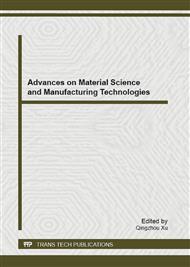p.148
p.153
p.157
p.162
p.167
p.172
p.178
p.182
p.191
High Thermoelectric Performance of p-Type Bi0.5Sb1.5Te3+xTe Crystals Prepared via Gradient Freezing
Abstract:
p-type Bi0.5Sb1.5Te3+xTe thermoelectric crystals with various percentages of Te (x = 0.00 wt.%–3.00 wt.%) excess were prepared by the gradient freeze method. By doping with different Te contents, anti-site defects, Te vacancies and hole carrier concentrations were controlled. The Seebeck coefficient, resistivity, thermal conductivity, carrier concentration, and mobility were measured. The relationships between the Te content and thermoelectric properties were investigated in detail. The results suggested that the thermoelectric figure of merit ZT of the Bi0.5Sb1.5Te3+0.09wt.% crystals was 1.36 near room temperature, the optimum carrier concentration was 1.25 × 1019 cm-3, and the mobility was 1480 cm2 V-1 S-1, respectively.
Info:
Periodical:
Pages:
167-171
Citation:
Online since:
December 2012
Authors:
Keywords:
Price:
Сopyright:
© 2013 Trans Tech Publications Ltd. All Rights Reserved
Share:
Citation:


